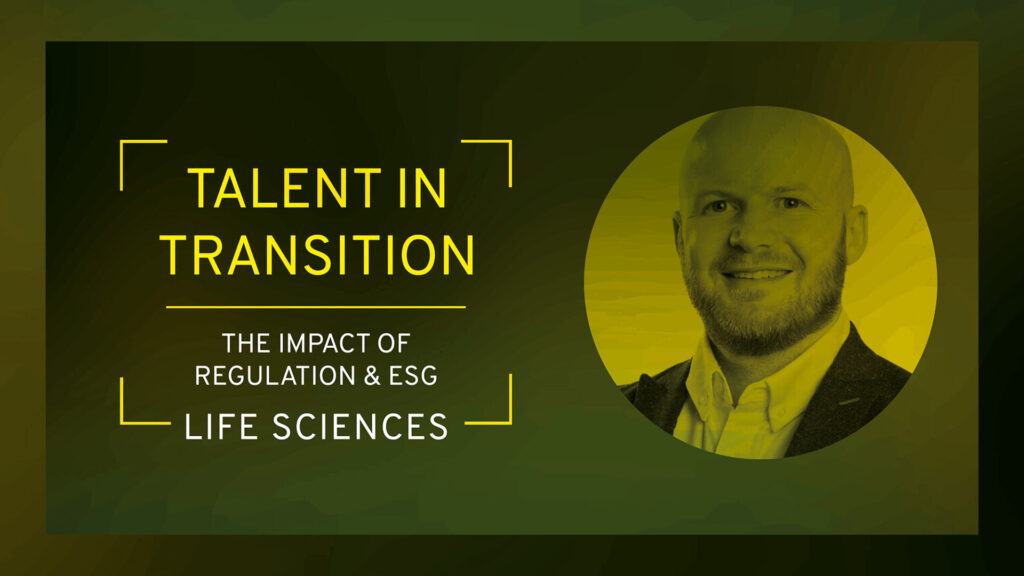Life sciences is different from fields like tax or finance, mainly because everything is so tightly regulated. Whether it be MSD making Keytruda, Gilead making Biktarvy or Haleon making Panadol, they must all meet the standards set by the Health Products Regulatory Authority (HPRA). And that’s just one agency; there is also the FDA in the US, the EMA across Europe, and the MHRA in the UK. Every region has its own version; if you want to sell a product there, you must play by their rules.
Regulation covers the full product lifecycle: from raw materials to packaging to distribution. Companies regularly get audited, sometimes with very short notice, and those audits can run for one or two weeks, depending on the complexity. Auditors want to see everything: transportation logs, warehouse conditions, test results, and batch manufacturing records. This puts a lot of pressure on teams to be constantly audit-ready.
The Constant Evolution of Regulatory Updates
Regulatory updates happen all the time. The HPRA, EMA, and FDA regularly publish changes to how things are handled, such as cold chain logistics for biologics or updates to pharmacopoeias. Each region operates independently, requiring global companies to manage multiple compliance requirements. While complex, these regulations keep the standards high in this industry.

These include changes to good manufacturing practices (GMP), clinical trial requirements, pharmacovigilance standards, and labelling rules. The frequency tends to increase during public health crises, such as the COVID-19 pandemic, where expedited pathways and emergency use authorisations become prevalent.
For context, in 2024, the FDA released over 30 guidance documents, while the HPRA published approximately 15 new or revised guidance documents related to drugs, covering topics from clinical trial protocols to labelling requirements.
How Tech Is Transforming Compliance
One of the most significant shifts in the life sciences industry in recent years has been the transition from paper-based systems to digital compliance platforms. Auditors today routinely examine records spanning four to five years, requiring a complete and traceable audit trail.

Digital Quality Management Systems (QMS), such as TrackWise and similar platforms, are now widely used across the life sciences sector. These systems provide comprehensive oversight by capturing critical data points, including material receipt, storage durations, testing activities, and approval workflows. Each step in the process can be accessed to reconstruct a complete and verifiable record of events.
This level of traceability is essential, particularly in the case of deviations. In such instances, Corrective and Preventive Actions (CAPAS) are initiated: issues are logged, investigated, and resolved to prevent recurrence. Auditors expect to see complete documentation: when the issue was identified, what actions were taken, and who authorised the resolution.
The role of the Qualified Person (QP) serves as the final checkpoint before a product is released from the manufacturing site. This position carries significant responsibility and provides assurance that all products dispatched meet safety, compliance, and documentation standards.
What’s Actually Changing in the Industry
While the regulatory framework is not undergoing radical transformation, parts of life sciences are evolving fast, particularly biologics. Biologics are drugs made with active substances that are, in a sense, “alive.” These include complex injectables such as Ozempic rather than conventional solid-dose formulations like Panadol. The use of biologics is expanding rapidly, especially in oncology and the treatment of chronic conditions.
Although no major regulatory overhaul is currently anticipated, the pace of innovation, particularly in biologics, precision medicine, and advanced manufacturing and distribution models, is reshaping industry priorities.

Sustainability Is No Longer Optional
Sustainability has transitioned from a “nice-to-have” to a real strategic focus. While compliance remains a driving factor, sustainability initiatives are now equally as important when it comes to cost, brand image, and talent attraction. Resource efficiency is at the forefront of operational planning, particularly in energy, water, and waste. Significant investments are being made in renewable energy and conservation measures, with on-site wind turbines in operation in Ringaskiddy and solar energy systems deployed by manufacturers such as Reckitt in Athy.

Organisations have adopted a clear two-pronged approach:
- Avoid regulatory penalties and compliance issues.
- Position themselves as green, responsible employers to attract and retain talent.
That kind of messaging is effective, especially with younger professionals who want to feel like they are working for a company that shares their values.
Regulations Impacting the Life Sciences Industry

How Talent Is Evolving and Upskilling
Despite all the changes in tech and sustainability, the core talent pipeline has not fundamentally shifted. Ireland’s pharmaceutical science programmes are world-class. Graduates finish university with a solid foundation, and once they begin their careers, there are plenty of opportunities to move up the ladder or specialise.
That said, we are seeing upskilling across the board. People with 20+ years in the industry are returning to do diplomas or new degrees to stay competitive. Additionally, with sustainability taking centre stage, there is a growing demand for environmental engineers, facilities engineers, and energy specialists.

Even though equipment and systems have become more advanced, such as modern HPLCs and automated labs, the core processes remain familiar. What’s improved is reliability and speed. There is less downtime, fewer breakdowns, and ultimately, fewer deviations.
The Global Opportunity and Local Stability
One major advantage of working in life sciences is the global transferability of skills. Ireland is the launchpad; skills acquired here are highly transferable, opening opportunities across major international markets such as the United States, Australia, and other regions with established life sciences ecosystems. Ireland offers unmatched career stability, with a mature infrastructure, an experienced talent pool, and strong government support. Ireland is not a low-cost destination, but we are a high-skill one, and that’s why companies keep investing here.

Looking Ahead
So, what’s next? We will not witness a life sciences revolution, but we will see steady, smart evolution. Compliance will get more digital, not more complex, sustainability will keep climbing the priority list, and biologics will continue to reshape where investment and innovation happen.
I anticipate that there will also be more targeted regulation around energy efficiency and ESG, especially from the EU. That will push companies to keep hiring for green roles and stay ahead of potential fines. But again, these changes won’t rewrite the industry; they will make it more robust.
The fundamentals are strong. The education system is delivering. The career paths are clear. Life sciences is evolving, but it’s doing so with purpose. And that makes it an incredibly exciting space to be part of.
For more Life Sciences insights or to discuss career opportunities in this field…
Connect with Aidan on LinkedIn or at aidan.crowley@barden.ie


 Jump Back
Jump Back

